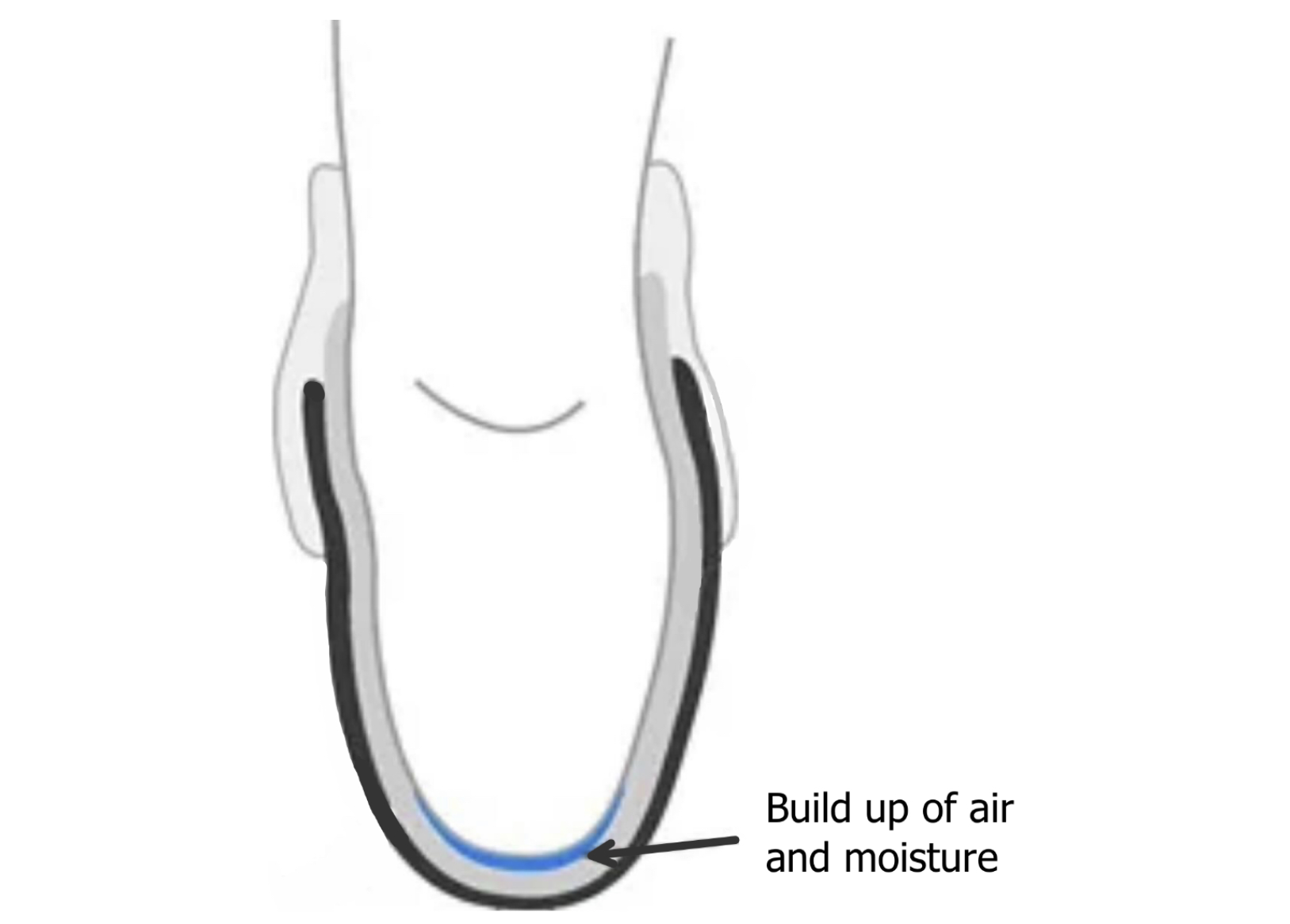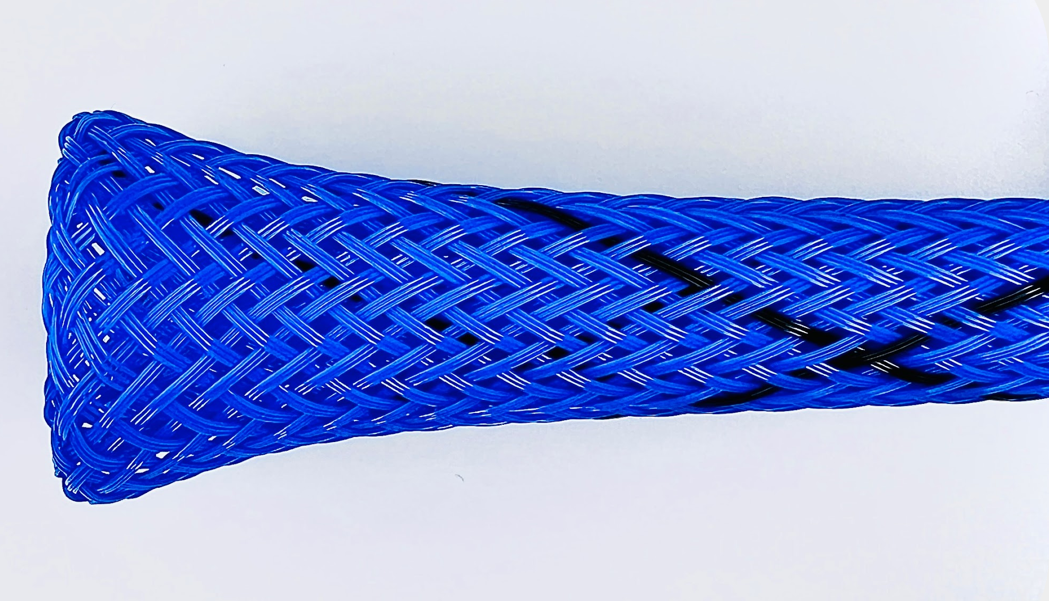Breathable & Adjustable Prosthetic Liner
Prosthetic liners serve as the intermediary between a residual limb and a prosthetic socket. Their primary role is to provide comfort to the wearer. However, their design leads to significant issues: increased perspiration and discomfort due to moisture buildup from sweat. This can lead to many problems, such as chafing, bacterial infections, slippage of the silicon liner, and more. As part of the Accessible Prosthetics Initiative's (API) research program, I sought to address this problem.

One solution was instantly clear for me. Since sweat was the issue, why not incorporate a weave into the design? A specific weave, known as the Chinese Finger Trap weave, would not only allow airflow, but distribute pressure and conform to the leg once tension was applied.
I began researching this solution and quickly found something that caught my interest - a medical finger trap. These finger traps are made to assist surgeons and are designed to securely hold a finger or limb in place while allowing for traction or manipulation. This can be very useful for surgeons when their patients are under anesthesia and their hand or arm need to be manipulated. A close up is shown below, displaying the medical finger trap's intricate weave.

I started with a rough sketch to organize my thoughts. I wanted to create a liner that mimicked the medical finger trap I had found. My design conformed to the shape of a typical liner, with a chinese finger trap weave incorporated. It would have a band up top for stability and comfort, as well as hook joints and a base joint to suspend a prosthesis.

After a team consensus, I planned to rapid prototype using 3D modeling software. I wanted the shape and weave style to be clear before further manufacturing methods were employed. At this point, I started to encounter some challenges. Of all the CAD software I knew how to use, none could create a woven design, especially not in a cylindrical shape. But I didn't let that stop me. I researched and found that the best software to use to create a woven cylinder would be Blender. So I decided to learn Blender.
In short, Blender is a very complicated software to use. Through quite a bit of trial and error, I was able to make the basic shape of a prosthetic liner, shown below. This was a great start, but I had a long way to go.

Before long, I had gotten a strong grasp of Blender, being able to manipulate a weave to conform to the shape I needed. Below is a time-lapse of me creating a woven prosthetic liner using Blender.
With a few tweaks here and there, I created the final design for my Adjustable and Breathable Lower Limb Prosthetic Liner:

Needless to say, I learned a lot. I learned that Blender is a last resort for engineers. I also learned that hard work and dedication can produce results, you just have to stick with it.
I shared my design with the HP education team, who were happy to assist in printing the 3D model. They allowed me to use their Multi Jet Fusion printer, which can 3D print intricate components. Below are the 3D printed liners.

I decided to participate in the Pittsburgh's School of Health and Rehabilitation Science's (SHRS) challenge. They recruited innovative thinkers to take part in a month long online Cornell course to teach us entrepreneurial skills. We learned about how to properly address user needs, reach out to potential clients, and pitch our ideas. I learned so much from this course.
My experiences from the course, such as presenting and talking to end users, truly revolutionized the way I will tackle problem-solving in the future.
I am confident that the skills, insights, and resilience I've developed through this journey will empower me to tackle future challenges with renewed creativity and determination.
